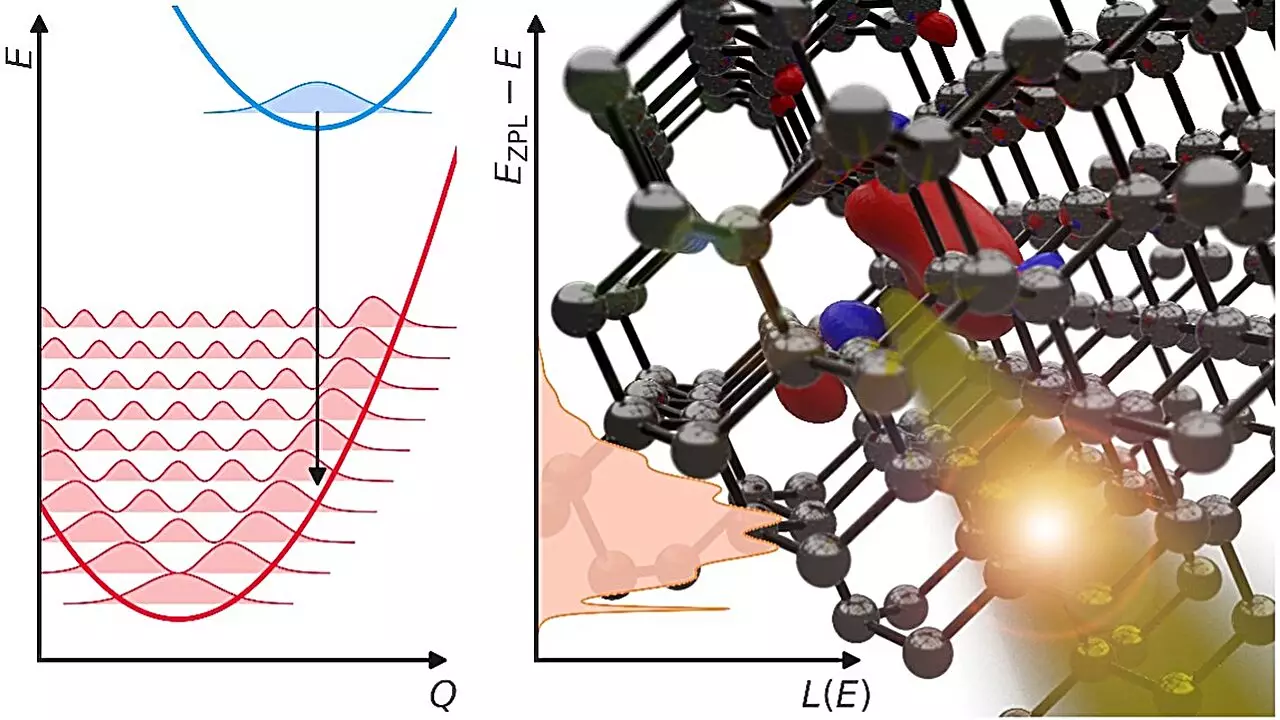

In an era where the digital landscape is continuously evolving, the advent of quantum technology heralds a new chapter in computational and communicational metamorphosis. Quantum computers promise to transcend the limitations of classical computing, but their true potential hinges on the establishment of a quantum internet. This transformative avenue of information exchange hinges on the behavior of photons—the elemental particles of light. Unlike their counterparts, photons boast a unique property; they engage minimally with their surroundings, allowing for higher stability and efficiency in long-distance data transmission. This stability is not just advantageous; it is, in fact, the foundation upon which the future of quantum connectivity rests.
The essence of harnessing quantum communication lies in photon emission. Various methods exist to create single photons, one of the most promising being the utilization of atomic defects within crystals. These imperfections, while often deemed undesirable, can be strategically engineered to yield photons that are reliable carriers of quantum information. However, the journey toward optimizing these emitters is fraught with challenges.
As research from the University of California, Santa Barbara, illuminates, the efficiency of photon emission diminishes significantly when the wavelengths shift from visible light to the infrared spectrum, specifically the telecom wavelengths crucial for long-distance communication. Understanding the interplay between atomic vibrations and light emission is paramount for the development of efficient quantum emitters—a task that has gained unique insight through cutting-edge research.
The unfurling complexities behind photon emission efficiency arise mainly from the incessant vibrations of atoms. As designated by Chris Van de Walle, a materials professor at UCSB, the oscillations can siphon energy from light emitters, leading to diminished light-emission quality. When these defects in a crystal interact sub-optimally, the result can be a breathtaking failure of emission where energy dissipation overtakes the intended photon creation.
Van de Walle’s team has taken the reins in investigating this phenomenon, crafting theoretical models that explore the relationship between atomistic vibrations and photon-generating efficiencies. Their findings are not merely academic; they offer a roadmap for engineering brighter and more proficient quantum emitters, culminating in advancements that could redefine the potential of quantum networks.
What stands out in the process of developing efficient quantum emitters is the multi-faceted approach advocated by the researchers. Beyond merely identifying defects, they propose building emitters that can optimally interact with their surrounding environment. The careful selection of host materials and conducting precise atomic-level engineering emerge as pivotal strategies to mitigate inefficiencies.
Another promising avenue involves incorporating photonic cavities, which facilitate enhanced interaction with light. This method leverages insights from a consortium of researchers, amplifying the potential for innovation through collaboration. The symbiosis of various disciplines leads to robust solutions that hybridize engineering and quantum physics.
As the researchers at UC Santa Barbara develop frameworks that promise brighter and more effective quantum emitters, they simultaneously pave the way for a future where quantum networks become mainstream. The implications of such an evolution are monumental, crossing boundaries not just in computing but extending into fields like cryptography, telecommunications, and beyond. The future might soon be intertwined with an internet not just faster but fundamentally more secure and efficient.
In examining the developments in defect-based photon emitters, it becomes evident that the complexities of quantum mechanics can yield bountiful innovations. By embracing the unusual and often perplexing characteristics of quantum particles, researchers are fostering an environment ripe for breakthroughs. As we dive into this exciting realm of quantum technology, one thing is clear: the prospects and possibilities that lie ahead are nothing short of revolutionary.
In the battle against climate change, reforestation has emerged as a beacon of hope, particularly…
Mars continuously captivates scientists and enthusiasts alike with its astonishing geological phenomena. Recently, the Perseverance…
In the rapidly advancing realm of technology, the emergence of quantum computing heralds a transformative…
Opioids have long been heralded as among the most effective solutions for alleviating intense pain,…
As of late March 2025, the measles outbreak that originated in west Texas has spiraled…
Water contamination by nitrates poses a dire threat not only to ecosystems but also to…
This website uses cookies.